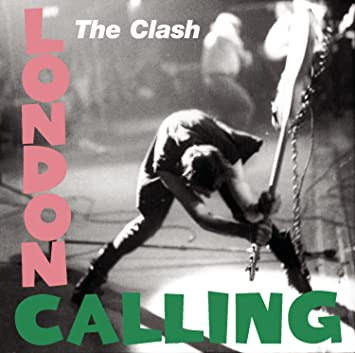Pink Floyd the wall
The End of the 1970’s was Both a Good and Bad Time for the Music Industry
By Ken Zurski
The end of the 1970’s, specifically the end of 1979, was both a very good and very bad time for music lovers.
First the good. Two albums – both double disc packages – were released only weeks apart from each other that even today are still considered two of the most influential albums of all time. But the end of the decade was also a tragic and sad one for the music industry when a deadly incident at a rock concert both shocked and angered a nation.
The two albums were both indirectly involved in the grief and healing that would follow.
Released in the final months of 1979, and due to their late arrival that year, both albums are widely considered to be successes in the 1980’s instead. (Note: “London Calling” was released in the UK in December 1979; in the US it was released on January 10, 1980). Regardless of which decade they belong, both have a place in rock n roll history and both deserve recognition for being musically experimental and risky too – after all they were double albums, meaning you got double the music in one package.
In retrospect, the timing was perfect. The 70’s was a turbulent decade for music. While hard rock and arena rock gained prominence in the 70’s, the rise of disco was eventually seen as a threat to rock fans, whose mainstay bands like the Rolling Stones dabbled in the genre of dance music (“Miss You”). The decade started with the break up of the Beatles and ended tragically with that unimaginable and deadly concert disaster.
Despite this, the 80’s was looming and rock needed a boost.
It came from the two albums by The Clash and Pink Floyd, respectively.
On December 14, 1979, the British group The Clash released their third album titled “London Calling.” The album cover itself was striking. It featured an action shot of bassist Paul Simonon holding a guitar by the neck and ready to smash it to pieces. It captured a moment of pure rock n roll explosiveness. It also conveyed the group’s reputation as rebellious and unflinching.

The album sold as expected, reaching #27 on the US Billboard charts, and doing even better overseas. Critics adored it calling it a “masterpiece” and placing it on Top Ten lists of the year for both 1979 and 1980.
As albums go, before the digital age, it is considered a work of genius, conceptually too. Most double albums seemed overextended and unnecessary. “London Calling” was different. It was a complete work of art, from the music to the package. And that cover? Iconic. And although music itself is always subjective, most rock historians agree, “London Calling’ is a classic in the true sense of the word. Today, it is the 6th most ranked record on critics’ lists of the all-time greatest albums according to Acclaimed Music. The Clash would go on to have bigger selling albums and singles, but for both musicianship and inventiveness, “London Calling’s” legacy is solid.
Before “London Calling” dropped, however, another double album was released. Unlike the Clash’s dramatic action shot on the cover, the front of this album was simple in design: a drawing of a white brick wall. But that was it. There was no writing on the wall, so to speak. If not for a transparent naming sticker attached to the cover, there was no other way of knowing who was responsible until you turned the album around.
The band, of course, was Pink Floyd and the work was appropriately titled, “The Wall.”

Pink Floyd was an established band, known for its conceptual albums and “The Wall,” their 11th release, was no exception. It was however, their first double LP and the reaction to its apparent expansiveness was mixed. “I’m not sure whether it’s brilliant or terrible, but I find it utterly compelling,” was the response from Melody Maker.
Despite the tepid response from critics, the album was a instant best seller, topping the charts in multiple countries, including the US.
Today, it is considered a classic that has stood the test of time. Several songs like “Another Brick in The Wall Part II” and “Comfortably Numb,” are rock radio staples and a movie of the album’s concept about a drugged out rock n roller who figuratively builds a wall around his troubled life, was released in 1982. Recent year tours of “The Wall,” with varying members of the band participating, are huge successes It still has legs, they say in the business.
The album’s initial release in late November, however was marred by tragedy when on December 3, 1979, eleven people were killed, crushed to death in a stampede, before a Who concert in Cincinnati. Just days before, in reviews, the comparisons of the dark and satirical “The Wall” to the Who’s classic double album rock opera “Tommy” was justified, but purely coincidental, considering the circumstances.
The Who were not held directly responsible for the deaths of the concertgoers, but it didn’t matter. The industry as a whole took a hit. After the tragedy, the rock world paused to mourn, reflect, regroup, and eventually move on.
Pink Floyd’s “The Wall” was a part of that.
A week later, on December 14, The Clash’s “London Calling” was released.
Bring on the 80’s.



